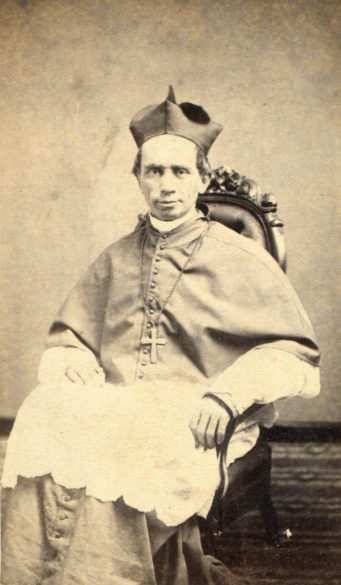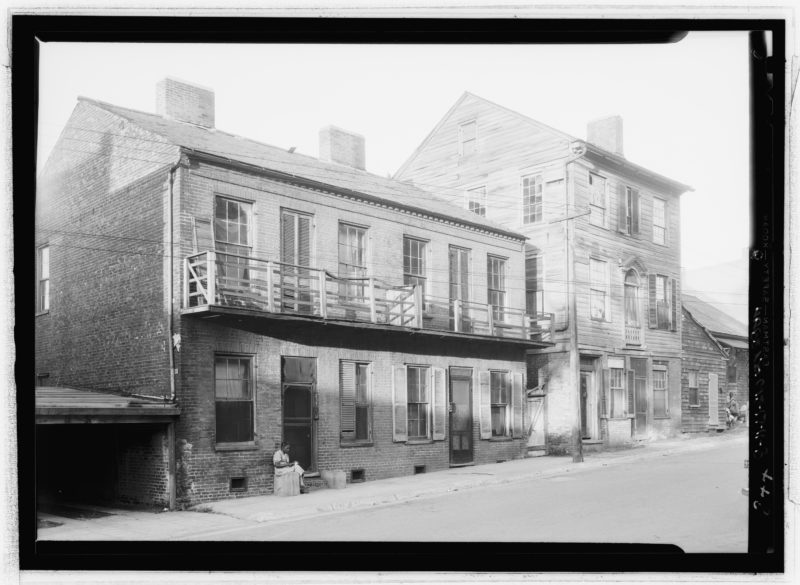From the Archives
By Mary Woodward
JACKSON – When I think back about my 12 years in the Jackson Public Schools, I remember the many classmates and teachers who were a part of my education. I began the first grade when JPS implemented integration completely.
In the third grade, Harry Reasoner of “60Minutes” visited my classroom at Power Elementary. His crew filmed us all morning and he talked to us about integration and how well it was going in JPS. Apparently, we were a model school district because people from around the world would visit to see how we did it. I guess people were expecting riots as in previous situations, but that did not happen. And so, we got to meet Harry Reasoner and our classroom was showcased on a national broadcast for a total of 15 seconds.
I give this introduction because for the next two columns we will be looking at education. This week we will look at early attempts at educating slave children once the diocese was established and Bishop John Joseph Chanche had arrived in 1841. Next week will focus on how history was taught to me in JPS.
I will preface by saying I am again using “Cradle Days” written by Bishop Gerow and his Chancellor Msgr. Daniel O’Beirne, who did most of the research for the book. History can be recorded in various ways only to be further researched and adjusted later when more resources become available. When using direct quotes and transcripts of letters, I will use the original language of the book using terms such as “negro” and “colored.”
From “Cradle Days” we read that after Bishop Chanche’s arrival in 1841 he wrote the following letter to the Archbishop of Vienna in an attempt to gain some funding for his fledgling diocese from The Leopoldin Society.
I have begun a mission amongst the Negroes. On my arrival here there were only two who called themselves Catholic; at present many frequent the Sacraments. They are given an instruction twice every Sunday and from 150 to 200 are present and are preparing themselves for baptism.
According to “Cradle Days” evangelizing and educating the local African American children was a mission he held very dear because he assigned a priest, Father Francois “to the special care of the Negroes.” In 1844 again seeking funds, Bishop Chanche wrote to the Propagation of the Faith Society in Paris the following description of his mission:
It would be very important for religion in the country here that we would have zealous Priests who would be willing to give themselves entirely to the instruction of the Negroes. … I have already commenced one of these missions near Natchez, and I have every reason to be hopeful.
In the baptismal records of the 1840s there is evidence that when clergy and Bishop Chanche were travelling to faraway places such as Jackson and Yazoo City, slaves were baptized on plantations. This ministry would have most likely continued under Bishop James VandeVelde, our second bishop (1853-55), but his short tenure and untimely death leaves him out of this section of “Cradle Days.”

Bishop William Henry Elder, our third bishop (1857-80), continued the commitment to evangelizing and educating the slave community in the Natchez area. In the 1860 announcement books from St. Mary’s, we find:
Your prayers are required for the repose of the soul of Sam – colored servant of Mr. Owens. He died this morning, after having received the Sacraments and other rites of the Church.
Also, from 1861 we read:
Colored persons, especially those old enough for their first communion ought to attend in church this afternoon at 3½.
A more telling announcement comes in May 1862, when an earnest appeal is made to the “masters and mistresses to arrange the work of those under their care in such a manner that they may have an opportunity of coming to instruction,” which would be held in the rectory.
I find the use of the phrase “under their care” interesting. Was it a way of appealing to the goodness in the person who owns another person to entice them into letting them be educated? Was it a way to guilt people into doing what was right?
Earlier language from Bishop Chanche’s same letter quoted above sent to the Propagation of the Faith in 1844 is phrased:
The Negroes are inclined to religion and they have not the permission to go outside the limits of the plantation. The good which would be done would be a permanent good. Besides, the good would reflect upon their masters. When these would see the change that would be produced in their slaves they could not but esteem a religion which could produce such effects, and esteem would lead them to embrace it.

In reading through this chapter entitled “Colored Catholics in Natchez” from the lens of today, the language and phrasing are very difficult to swallow. But I began to wonder if church leadership was trying to make something good out of something really bad. Was there a genuine concern for the souls of these enslaved people? Since slavery was an accepted institution at that time in that place, were the actions of the bishop and his priests carefully calculated so as not to offend their slave-owning parishioners and lose financial and spiritual support?
These letters and announcement books, language and phrasing aside, does seem to reflect concern for the dignity of the human person and a recognition of that individual as God’s creation.
Next time we will explore a little more of Bishop Elder’s actions during and after the Civil War and we will meet Msgr. Mathurin Grignon, rector, administrator, vicar general.
(Mary Woodward is Chancellor and Archivist for the Diocese of Jackson.)
